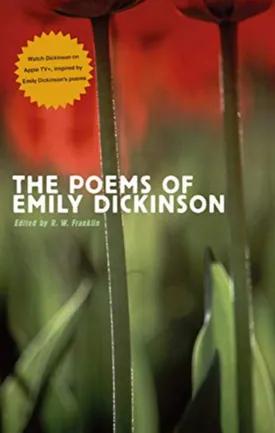Emily Dickinson
Emily Dickinson was one of the most influential poets of the 19th century. Born in Amherst, Massachusetts in 1830, she lived a rather reclusive life, writing and studying in her father's home. Over her lifetime, Dickinson wrote over 1800 poems on a wide range of topics, from love, death, and nature to the afterlife, transcendence and mortality. Her words have become a part of the American literary canon and have been studied extensively.
Dickinson had a passion for writing from a young age. She attended Amherst Academy, a local school that taught traditional academic subjects, writing and art. She went on to attend Mount Holyoke Female Seminary. There, she wrote her first known poem, “My Life had stood – a Loaded Gun”. While at Mount Holyoke Dickinson began experimenting with writing poetry, also submitting some of her works for publication but without success.
Dickinson returned home most likely due to illness or homesickness at the age of 21 and focused her life on her poetry. For many years, Dickinson kept to herself, having only a few close friends that she kept in contact with via letters. During her lifetime, only seven of her poems were published. Rumors which circulated throughout the town suggested that she was an eccentric spinster, a woman without any aspirations for marriage or children.
Throughout her life, Dickinson wrote about a variety of topics, although she mostly focused on death and immortality. Her poems reflect her views on life’s transience. In her poem, “Because I could not stop for Death,” death is casted in the form of a courteous gentleman calling to the speaker, giving her a ride in his carriage. Dickinson depicts death as an inviting figure that symbolizes the end of life’s journey.
Dickinson’s style is also distinct. Unlike other New England poets of her time, Dickinson rejected the traditional form of poetry. Instead, she used unconventional forms, often breaking the typical rules in meter and rhyme. Her style is often described as being mysterious, and often shifts from playful to gloomy in her poems.
Dickinson’s works were not published and given much scholarly attention during her lifetime. In 1890, two-third of her poems were published in a collection by two of Dickinson’s brother-in-law, but her works were received with much confusion and criticism. After her death in 1886, Dickinson’s works were finally given recognition and readers were informed of what had been kept secret for so long, the imagination and creativity of Emily Dickinson.
Dickinson’s words still reverberate today. Her works inspired others, notably Walt Whitman. In 1915, Dickinson was the very first woman to be inducted into the American Academy of Arts and Letter, her fame and influence had lasted until this day. She is invariably regarded as one of the greatest of American poets and her works have been widely studied. Dickinson’s poetry speaks of topics that have been cherished and interpreted for centuries, and will surely be for centuries to come.

